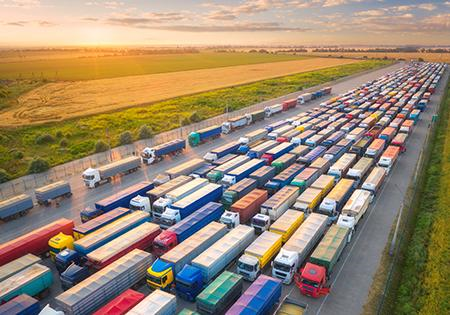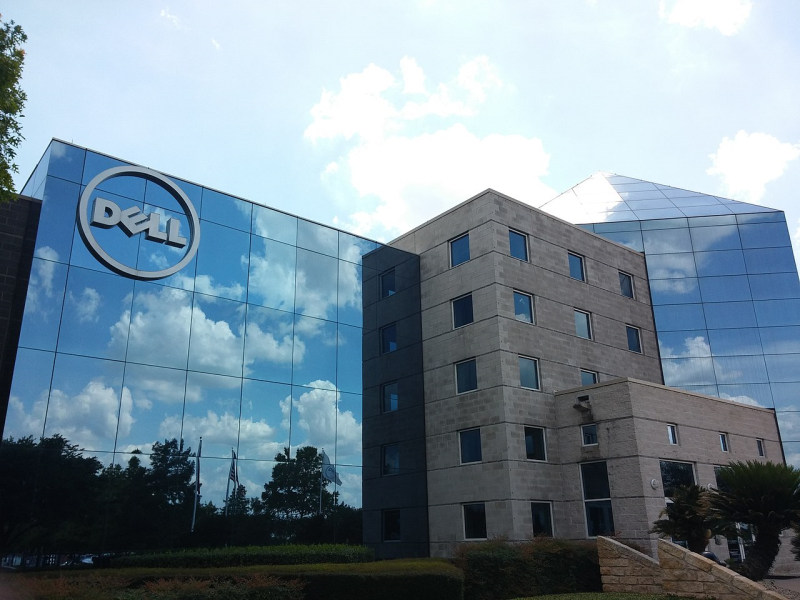
Starting June 1st, 2023 Our warehouse fee will be $0.65/cubic foot per month
In effort to lower the warehouse storage fee during inflation, we have went narrow aisle racking.This construction took us four months but the project is finally completed. With narrow aisle racking, we are able to drop storage by 24%.We as partners will go through this inflation together.
03/23/2023
Crude tanker orders sink to 2.7% of operating capacity, product tankers to 6.1%
A rare delivery: the new dual-fuel VLCC Seaways Endeavor with two spherical LNG tanks on the deck (Photo: International Seaways)
Not for the environment, but for the owners of the tankers that carry the carbon: the crude oil, gasoline, diesel, and jet fuel that the world continues to burn in ever-increasing quantities after it has been transported over ever-greater distances.
Either an onboard carbon-capture system (which does not exist) or new vessels that burn something other than fuel oil are required to decarbonize shipping.
The regulations regarding this new fuel have not yet been drafted. Why, then, would tanker owners who are in the business of making a profit accept the residual value risk of ordering ships that may become prematurely obsolete after the rules are drafted?
The answer is that they have not and will not. A historically low number of crude and product tankers are currently on order.
Tanker orderbook dwindles
The numbers are astounding. Clarksons Securities reported that the ratio of crude tanker capacity on order to crude tanker capacity currently in service has reached a record low of 2.7%.
The figure is only 1.7% for very large crude carriers (VLCCs; tankers that transport 2 million barrels of crude). VLCCs are indispensable for transporting crude oil exports from the Gulf of Mexico and the Middle East. There will be 910 VLCCs of varying ages on the water by the end of the year. However, no new VLCCs are scheduled to be delivered in 2024, and only one is anticipated in 2025.
The situation for product tankers is nearly as dire, with the orderbook-to-fleet ratio for these vessels falling to a meager 6.1%.
Monday's 17th Annual Capital Link International Shipping Forum in New York centered on the causes of the precipitous decline in the tanker orderbook as well as the potential profits for existing tanker owners.
Analyst at Jefferies Omar Nokta commented on the situation, stating, "We are now witnessing the consequences of not investing in new capacity for several years."
Owners balk at ordering risk
The lack of new tanker orders is attributed in part to the uncertainty surrounding future regulations on vessel propulsion. In addition, the crude and product tanker owners have only recently resumed making a profit following the industry's two worst years in three decades in 2020 and 2021.
The cargo itself is an additional factor. Two to three years elapse between placing an order and receiving a new tanker, and these assets have a 20 to 25-year lifespan. Therefore, a ship ordered today will likely still be operational in 2050. If the world is transitioning away from polluting fossil fuels, what will the tankers ordered today transport in their later years?
"You will be exposed to a substantial amount of residual value risk. This is typically not a recipe for shipping's long-term success "Stifel's shipping analyst Ben Nolan stated. Residual value risk is the possibility that an asset's future resale price will result in a loss.
Most owners prefer that cargo shippers—refiners, energy majors, or traders—assume a portion of residual value risk by signing a multiyear charter agreement for the newbuilding.
Nolan elaborated, "When ordering a $100 million ship that normally costs $70 million, you must ensure that your economics are front-loaded. If someone is willing to provide you with a time-charter contract to cover your front-end economics, that is acceptable. If not, this is a significant risk."
Four years ago, it was reported that oil shippers needed to back new tanker orders with long-term charters due to the decarbonization push. However, shippers have not yet taken this step and show no signs of altering their strategy.
‘Nothing to do with capital discipline’
According to Bob Burke, CEO of Ridgebury Tankers, the lack of tanker orders has little to do with fiscal responsibility. "Capital discipline is not applicable in this market. It is not in our best interest to acquire costly ships with unreliable propulsion systems.
"Ordering a ship to be delivered in two and a half years at historically high prices, with capital tied up until delivery and uncertainty regarding the lifespan of the propulsion system makes it difficult for a shipowner to commit without a charter from an oil company," explained Burke.
Christian Ingerslev, the chief executive officer of Maersk Tankers, stated, "Current orders come from those with tax incentives or those with a long-term charter backing, typically for a dual-fuel design. If not, no orders will be placed."
The CEO of International Seaways (NYSE: INSW), Lois Zabrocky, stated, "Ordering a VLCC in Korea would likely cost around $120 million, plus an additional $15 million to $20 million for dual-fuel LNG capability. "Partnerships are required to mitigate a portion of the risk, as this amount is substantial."
Zabrocky stated that a charter of seven years or longer would be required to incentivize a VLCC order, which has not yet been observed. Other than the 10 VLCCs in the Shell project, no one has taken this action.
In March 2021, Shell agreed to charter ten dual-fuel VLCC newbuildings for seven years. AET ordered three, while International Seaways ordered three and Advantage ordered four. The Seaways Endeavor, the first of International Seaways' dual-fuel VLCC newbuildings, was delivered this month.
The Shell transaction was hailed at the time as a potential model for fleet renewal during the energy transition. It has since been determined to be an isolated incident.
LNG, container ship orders backed by charters
Shipyards from China, South Korea, and Japan construct commercial vessels. Due to the demand for new container ships and LNG carriers, shipyard slots through 2025 are nearly full. Other markets, such as crude and product tankers, have seen price increases due to the high demand in these industries.
Shipowners order LNG carriers, which are supported by long-term charters from LNG cargo shippers. The duration of these charters is growing, according to Harrys Kosmatos, corporate development officer at Tsakos Energy Navigation (NYSE: TNP).
Previously, charters supporting orders for LNG newbuildings lasted between five and eight years, but now 10-year contracts are readily available. Kosmatos explained that cargo interests in the LNG shipping industry have recognized that owners need a reasonable return on their costly investments through a time charter that spans a substantial portion of the asset's life.
The majority of container ship newbuildings are supported by multi-year charters from shipping companies. For example, the liner company Zim (NYSE: ZIM) has a newbuilding program comprised of vessels ordered by Seaspan and other shipowners and chartered to Zim for up to 12 years.
Historically, tanker shipping followed the same model for charter-backed newbuilding orders as LNG shipping and container shipping do today. This is no longer the case, causing a conflict between owners' new demand for charter-backed orders.
Tanker shipping followed the "industrial shipping" model from the 1950s to the mid-1970s, as described in "Maritime Economics" by Martin Stopford. Tankers were either owned by oil shippers or chartered from independent shipowners for multiple years.
In the 1950s, charters supporting orders for new construction lasted between five and seven years. Charters of 15 or even 20 years were common in the 1960s. In Japan, the commonly used charter-backed newbuilding model was known as "shikumisen."
From an industrial shipping to a spot model
Beginning in the mid-1970s, the industry underwent a major transformation.
Oil transportation shifted from a carefully planned industrial shipping system to a market-driven operation – a spot business. By the early 1990s, over 70% of the independent owner fleet traded on the spot market, compared to only about 20% in the early 1970s.
This shift occurred because the oil trade transformed from a predictable, carefully planned transport system to a volatile and risky business in which traders played a substantial part. Transport was largely left to the marketplace to manage, as explained by Stopford.
Burke stated during the Capital Link forum that during the 1960s and 1970s, oil companies had long-term charters and the spot market was marginal. However, oil companies discovered that purchasing ships on the spot market was more cost-effective, as it allowed them to allocate equity and capital elsewhere. As a result, a substantial spot market developed.
As oil shippers ceased to provide charters to support shipowners' newbuilding orders, shipowners were forced to order new vessels and hope for a favorable market. Burke remarked that shipowners walked themselves into this predicament, but they can no longer afford to do so.
Burke argued that for orders to increase this time, the tanker business must return to a more industrial shipping model.
He suggested that oil companies and traders consider the possibility that shipowners may not order new vessels in the current market. According to Burke, it is unlikely that shipowners will place new orders, so oil companies or traders desiring new vessels will have to take action themselves.
‘We will be cash distribution machines’
Due to already full shipyards with container ship and LNG carrier orders and lengthy construction lead times, it is not possible to introduce a significant amount of new crude and product tanker capacity to the market before at least 2026. According to Mikael Skov, CEO of Hafnia, even if the market were intentionally overordered, it would not result in a substantial increase in supply in the near future.
In the meantime, a large number of older crude and product tankers are being purchased and transferred into the "shadow fleet" for the transportation of sanctioned Russian oil, removing them from Western trades. According to Kosmatos, this development could result in negative growth in certain segments of the Western trades. Despite these obstacles, it is widely anticipated that demand growth for both crude and product tankers will outpace supply growth, resulting in high returns for tanker owners, possibly even boom-level returns. Burke remarked that the fundamentals of supply and demand are in their favor, and Gurnee predicted that their company will become "cash-distribution machines".
MintN

Hot News
08/05/2024

Hot News
02/23/2023

Hot News
02/23/2023

Hot News
02/06/2023
Hot News
02/07/2023